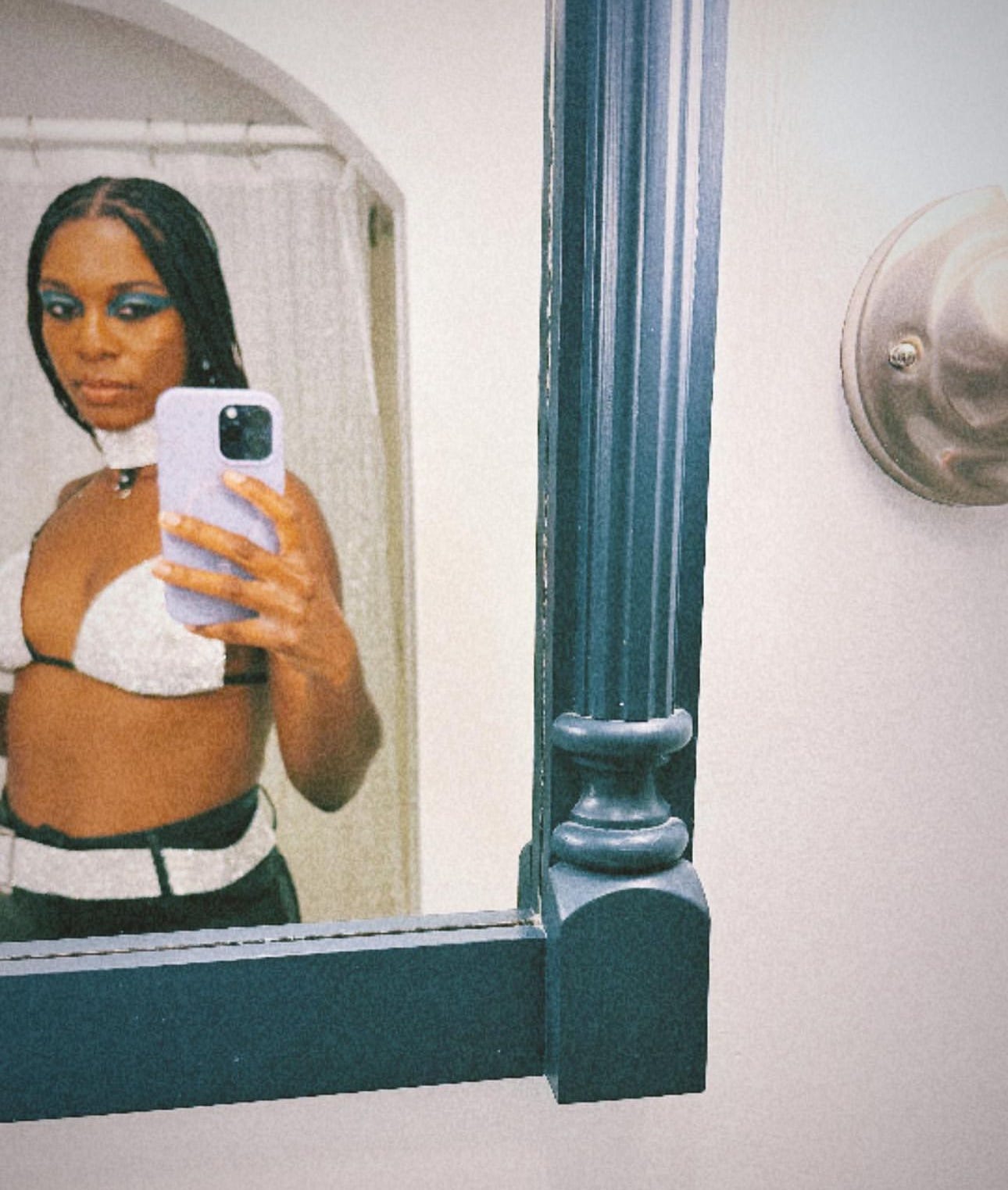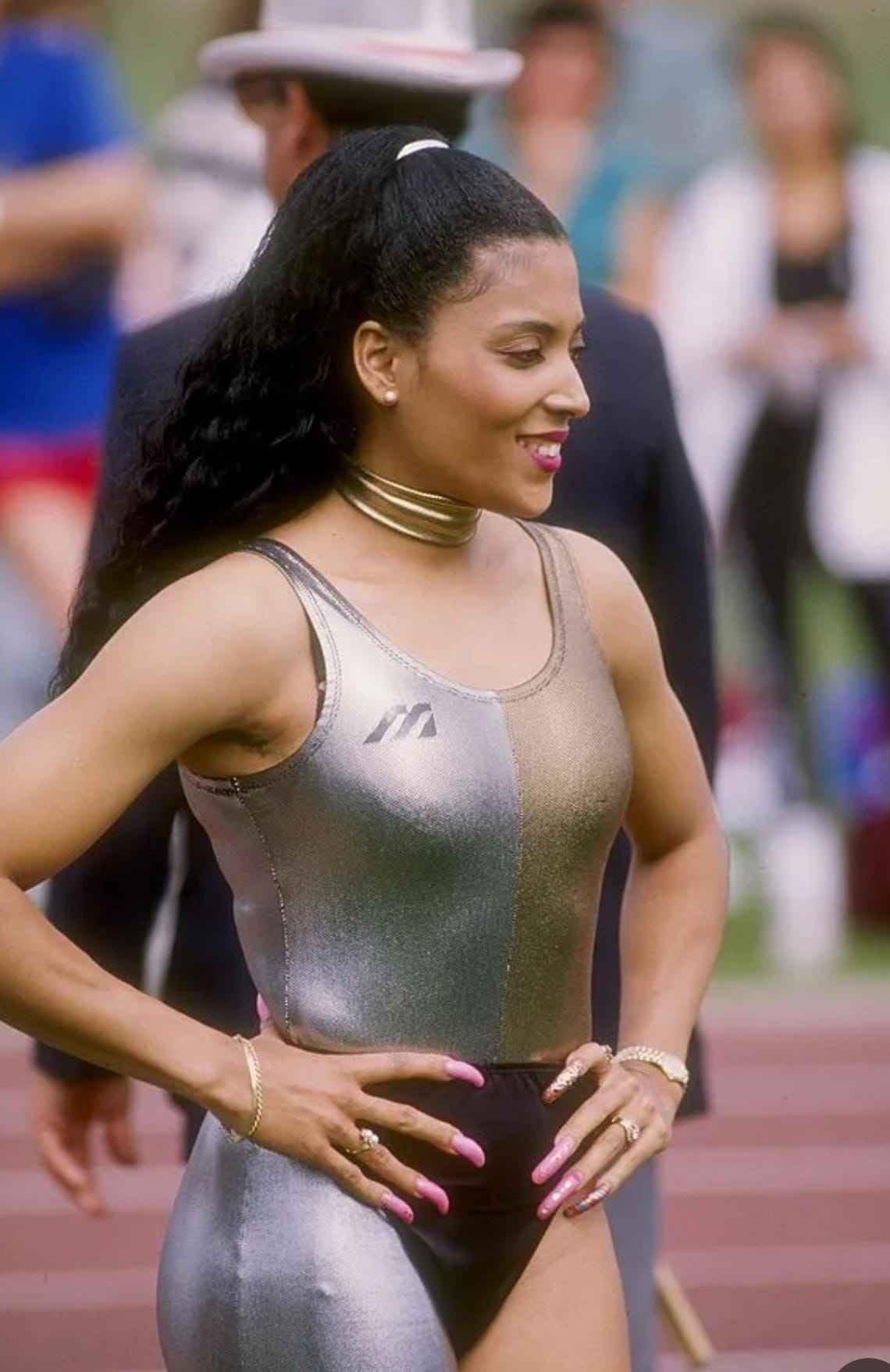As a Black girl of the late Eighties, I was born with many things waiting for me; sacred routines, rites, and rituals. Like the brisk dance of a comb dividing and conquering strands to be pulled into dark, intricate rows against the scalp. The ceremony of soulful music pouring out of a radio like a libation to the soul, with the head tilted back and eyes closed in the overflow. Hearing Are you hungry, baby? and then a bowl of red beans served with rice as white as pearl, as pure as God’s eye, appearing right in front of you, as if by magic. This inheritance, this gift was carefully wrapped and protected with furrowed brows and wagging fingers and tongues so hot and sharp you’d think the made-from-scratch bread nearly cut itself. If life is God’s kitchen, everything my people had was made—and used—for love. Even our pain, our most potent ingredient. Everything was weighed and pressed and parceled with a sense of urgency and sanctity in equal measure.
Oppressed by the rule of law, my ancestors molded a life driven by precedent. Refined by turbulence from the outside, we governed ourselves with a stringent legislature, one of careful and suspicious anticipation and shrewd observation. They understood that in order to live life you first had to ensure that you could somehow survive it. That some got to pluck the fruit, pressing their lips against its dewy skin while others only felt the fleeting weight of it in their hand. That either way existence could be sweet even if you didn’t get to taste it. My bloodline carries innate instructions on how to materialize a kind of sweetness we can call our own and swallow without choking. And if I am still, I can feel that promise pulsating in my veins. You could have it all, my girl, it seems to say. But you have to follow the rules.
I came into a modern world, a world with jumpsuits, limousines with phone lines, gold chains with spinning clocks, high top fades and televisions as big as the walls they were housed in, a world that felt at odds with the seemingly antiquated hypervigilance of my predecessors. Everything was like one of those fast-food commercials; fresh, hot, and fast. And I was a living, breathing mirror between those worlds, reflecting the pain of the past of having to fight for every scrap and the flush that came with the rapid-paced, lucrative exports of Black style. We were reckoning with an uncertain future, where the fascinated world saw our power expanding faster than they knew what to do with us. All before I could uncurl my tiny finger from my mother’s grasp.

As I got older, the standards expanded into the ways of femineity and etiquette, with its own set of demands and parameters of behavior. Don’t have ashy knees. Smile so they don’t think you have an attitude. Your shoes have to match your outfit. And for the love of GOD comb your hair. The way you looked was a tribute to the home you were raised in and the people who did the raising. As I got deeper into puberty and climbed the ranks of education, the challenge became how to rise to the top while not looking a mess as the world watched, a world that was already hyper-critical of POC girls and looking for reasons to justify our unbelonging. Your hair and your spirit could not be out of place.
Two months ago, I had figured out who I wanted to be for Halloween. Last year I was Aaliyah—killed it, mind you—and was out for blood. One of my friends had worn the costume the year prior and I practically did a cartwheel into her DMs. Donning a nearly identical rhinestone bikini top and matching choker from her iconic “Try Again” video, I could only compare it to the way that Bruce Wayne must have felt when he first put on his Batman suit. Plus, my ass looked amazing in leather pants. The majority of Halloween was spent disappearing to the bathroom, pantomiming dance moves I memorized over two decades ago. Did I mention that Aaliyah is my hero? The thought of going as another iconic Black woman was intoxicating.

Conjuring up Florence Griffith-Joyner was easy. In the late Eighties and Nineties she was everywhere. Images of her iconoclastic one-leg tights paired with her gold jewelry and long, red nails floated to the top of my consciousness. She had the type of beauty that was emblazoned in Black hair magazines, the type that our men would sing about on street corners and immortalize in barbershop chairs, that churchy folks would gossip about after Sunday service. Not only were her stats untouchable as a top-tier Black woman athlete, but she also countered the rigid sport of track and field with something feminine and glamorous, which was unheard of for her time.
This was not without pushback, of course. From disdain to disbelief—she challenged the critical gaze over her bodily choices. Some argued that her aesthetic was, at best impractical, at worst ostentatious, an audacious marriage of style and athleticism. She was touted as the fastest woman in the world, bringing home hardware from the 1988 Seoul Olympics for the U.S. (3 gold medals, one silver), yet she still caught strays for being perceived as too sexual, too cocky, too much. Like most women who looked like her.
Last year, I had a significantly smaller tussle of my own. I’m talking about those tiny squares online—you know the app (or maybe you don’t, I don’t know what the kids are into these days). On Instagram I was contending between reality and fantasy, deciding how I wanted to present myself online. It wasn’t that serious, but it was that serious. The floodgates had opened in the only way it can while exploring your identity and I was caught in the internal undertow of thou shalt nots. Aesthetically, I was experimenting, taking chances that being a mother with a Pentecostal upbringing made me nervous. I was beginning to see myself in a new way, possibly for the first time in my life. However, I was uncomfortable with this emotional growth spurt and the imagined push back I would get in how I chose to express it.
The other issue was that sometimes being that girl felt like a lie, flat out. As I emerged, “new and improved”, with more swagger and a little swing in my hips, I was a bit stunned by the eternal validation I was starting to get. “You are winning!” a friend swooned once in the comments section. But there were many points I had to ask myself…was I? My life was in such an upheaval (spoiler alert, still is!) and I was still, so, so sad at times. But I was also hot (so they said!). When I felt like an emotional wreck, I was afraid to let my outside show it. Fix your face. Put a bow on it. Once again, the survival tapes began to reel, and I was replaying them constantly.
My relationship to beauty became a tug-of-war between obligation and desire. And even though my life felt raw and messy, it was like I was putting the real pieces of me back together again, finally. My hands began to move over the curves once lost from a waned appetite. Confidence was filling out the gaps where my soul felt gaunt. I figured out that I could be fine as hell, but I could also be free. At ease. And like FloJo, I started to see more self-satisfaction in my own photos. Don’t get me wrong, I was taking notes. She was stunning but also offered something so much deeper; a way for young girls and women, especially POC, to view themselves highly and stay true to themselves while aiming for more. And as I began to heal, I wanted more for myself, too.
FloJo believed that showing up as herself was an essential part to her staggering success. “ Track and field is a beautiful sport and I just want to bring my personality and the clothes that I wear off the track onto the track…just be myself…and fashion…designing has been my life since I was a child,” she said in an ‘92 interview with Ann Liguori. In that same interview she cleared the air about the criticism she had received in the past, adding, “Someone made a comment in the paper years ago that…well she won’t be able to run fast with fingernails that long and her hair that way and those outfits but I just wanted to tell them that I doesn’t matter what you wear, it’s what you believe you can do.”
Because if you couldn’t show up as your best, the way you define it, then what was the point? The world was her mirror, smeared with ignorance and taboo and incapability of perceiving her beauty and her talent. Yet, FloJo was still able to flash her red-lipped smile with that sense of knowing glittering behind her eyes. No matter what track she competed on or camera she appeared behind, she was still that girl from Watts, who roughhoused with her brothers, who loved fashion and sports fervently, who sought excellence in everything she did. She dared to push the limits of bodily mechanics as well as the perception of having a black body, of being a woman. She chose autonomy and authenticity over assimilation. And she was going to enjoy the fruits of her labor, critics and naysayers be damned.
I was shocked to discover that FloJo had not obscured into a life of privacy after retiring as a heavily decorated track star and Olympian but passed away in her sleep at a devastatingly young 38. It was due to an epileptic seizure, although rumors of possible steroid use loomed. Regardless, FloJo’s legacy of pushing the envelope endures. If her ancestors fought to maintain survival through the path of predictability and societal sensibility, she generated inner homeostasis by thinking outside the box and embracing a life as trailblazer on and off the track, honoring her roots every step of the way. “I never want anybody to be like me. I want them to make bigger footsteps than me,” she once told her husband, and fellow track and field gold medalist, Al Joyner. I think her legacy brought on the likes of other amazing Black female athletes, from Serena Williams to Sha’Carri Richardson—but also us “regular” girls, who may not have the world’s spotlight but are choosing to shine in our own ways. And we are still running, Flo. With so much still waiting for us.






I have chills. Thank you for so eloquently putting into words the way it feels to navigate growing up as black girl and the many identity crises that come with that. Thank you for your vulnerability. This is beautiful.
“…Pressing their lips against its dewy skin while others only felt the fleeting weight…” i love that sentence.
I did not know she passed away in her sleep at 38, either. That is so sad.